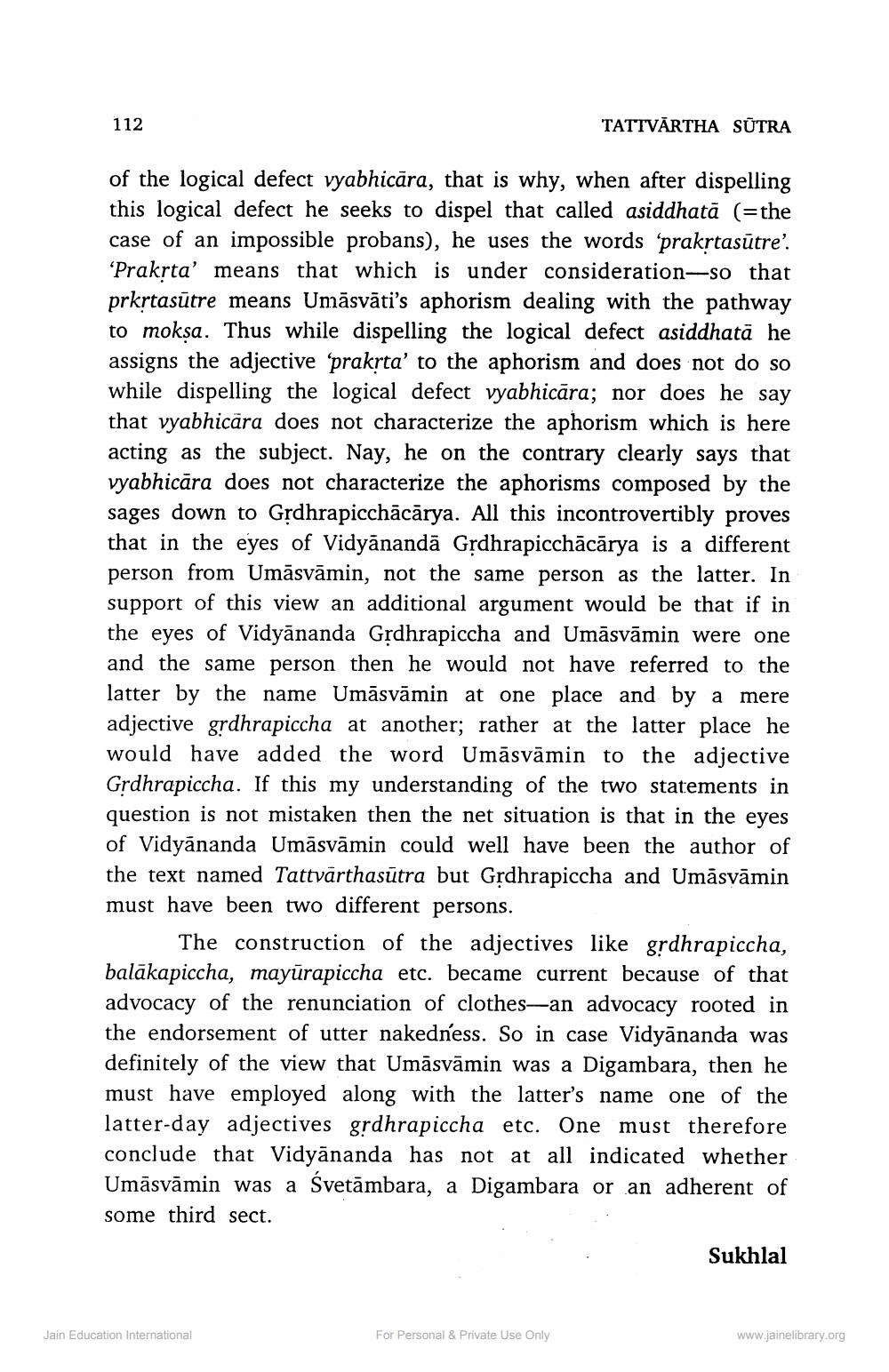________________
112
TATTVĀRTHA SŪTRA
of the logical defect vyabhicāra, that is why, when after dispelling this logical defect he seeks to dispel that called asiddhatā (=the case of an impossible probans), he uses the words 'prakrtasūtre'. ‘Praksta' means that which is under consideration-so that prkstasūtre means Umāsvāti's aphorism dealing with the pathway to mokşa. Thus while dispelling the logical defect asiddhatā he assigns the adjective 'prakrta' to the aphorism and does not do so while dispelling the logical defect vyabhicāra; nor does he say that vyabhicāra does not characterize the aphorism which is here acting as the subject. Nay, he on the contrary clearly says that vyabhicāra does not characterize the aphorisms composed by the sages down to Grdhrapicchācārya. All this incontrovertibly proves that in the eyes of Vidyānandā Grdhrapicchācārya is a different person from Umāsvāmin, not the same person as the latter. In support of this view an additional argument would be that if in the eyes of Vidyānanda Grdhrapiccha and Umāsvāmin were one and the same person then he would not have referred to the latter by the name Umāsvāmin at one place and by a mere adjective grdhrapiccha at another; rather at the latter place he would have added the word Umāsvāmin to the adjective Grdhrapiccha. If this my understanding of the two statements in question is not mistaken then the net situation is that in the eyes of Vidyānanda Umāsvāmin could well have been the author of the text named Tattvārthasūtra but Grdhrapiccha and Umāsvāmin must have been two different persons.
The construction of the adjectives like grdhrapiccha, balākapiccha, mayūrapiccha etc. became current because of that advocacy of the renunciation of clothes—an advocacy rooted in the endorsement of utter nakedness. So in case Vidyānanda was definitely of the view that Umāsvāmin was a Digambara, then he must have employed along with the latter's name one of the latter-day adjectives grdhrapiccha etc. One must therefore conclude that Vidyānanda has not at all indicated whether Umāsvāmin was a Svetāmbara, a Digambara or an adherent of some third sect.
Sukhlal
Jain Education International
For Personal & Private Use Only
www.jainelibrary.org




